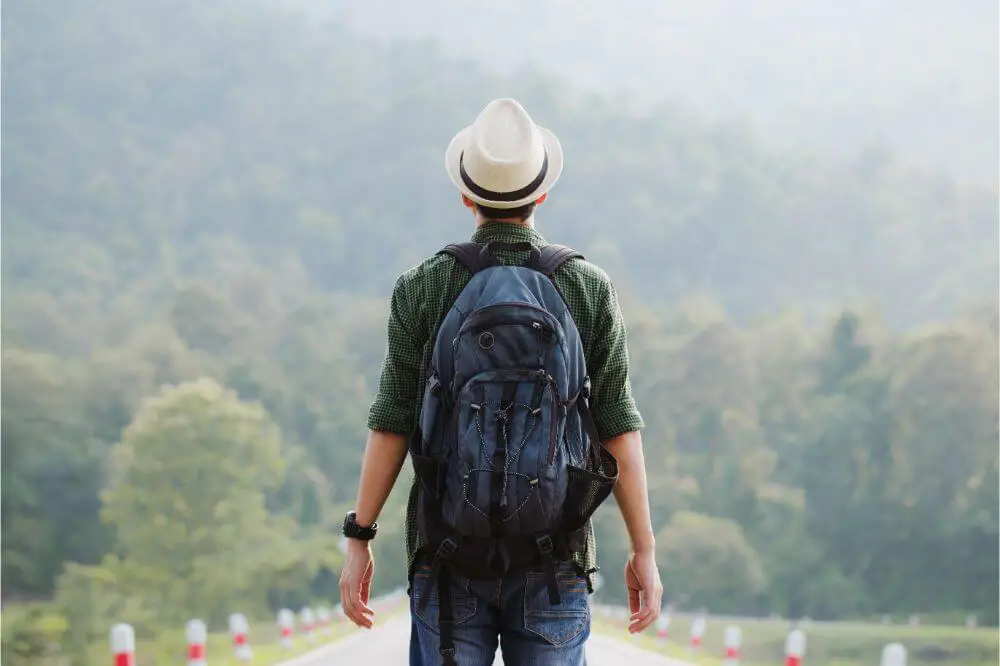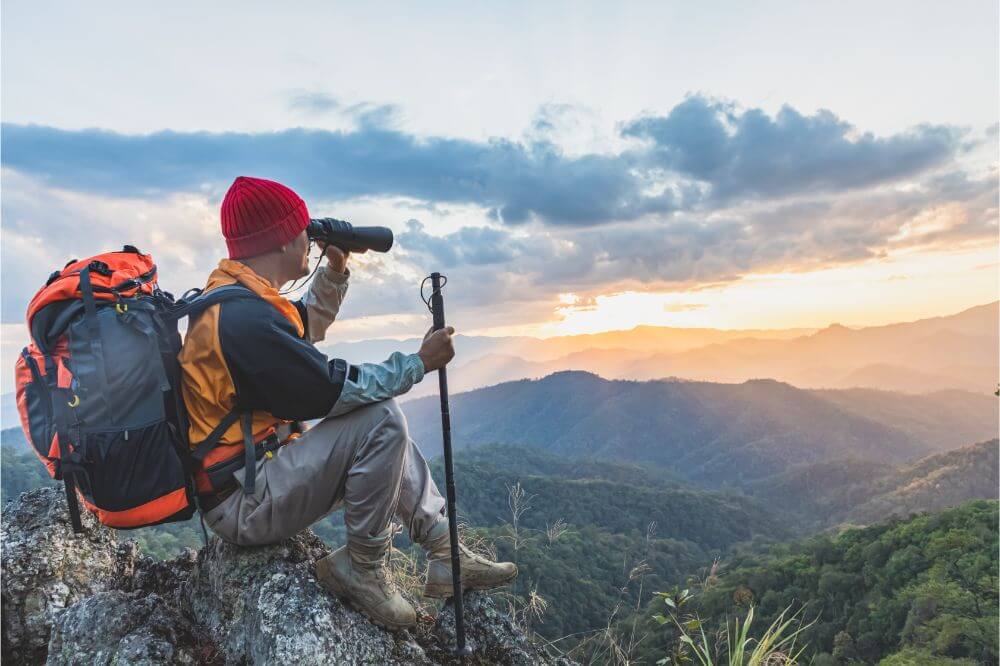There are two simple rules on how to pack a hiking backpack properly – in this article we’ll quickly run through everything you need to enjoy your next trek!
OK, so you’re staring at that backpack and the disturbingly large pile of things next to it.
Let’s assume you’ve got a pack made of lightweight materials, you’ve ruthlessly reduced your to-pack list down to the true minimum set of items to take with you (beyond your change of socks, compass, water, lightweight snacks …)
So now how do you pack that pack like a pro?

How To Pack a Hiking Backpack Efficiently
There are several zones to think about in a large backpack, and four rules:
Rule 1 – Close and Heavy
A backpack with snug shoulder straps, a sternum strap and an internal frame will help distribute weight around your body so not all the weight is on your shoulders.
But center of gravity matters – a lot.
The last thing you want is to have your pack pulling you backwards. That’s a problem on level ground, let alone scrambling over steep slopes.
So Rule 1 – pack heavy items close to your body inside the pack (as low as possible)
Rule 2 – Lights Out
If you follow Rule 1, then Rule 2 is immediately clear. Pack the lighter items further out from the body.
(OK, we admit it – we can’t really work out if this is a rule of its own or just the same thing as rule 1)
This continues the same theme, getting the center of gravity close to your body so your pack doesn’t pull you over.
So after you’ve got the heavier items close to your back, you can brace them with lighter weight stuff that goes towards the outer edges of your back.
That goes for the pockets and the top of the pack also. Lighter items only.
Rule 3 – Last Out, First In
What are the items you’re going to use last in the day? (Think about sleeping bags for instance)
Those items you’re not going to need until later should go deeper in the pack.
Now I know what you;re thinking.
“But what if they’re the light things? Doesn’t that break Rule 1?”
OK, fair question. Take sleeping bags. Assuming you’ve bought a modern, crazy-lightweight, 21st century materials sleeping bag that weighs, like, 0.0001 grams (great choice btw) then the way to deal with this is to use that as the padding around the heaviest items in your pack.
Easy, right? Heavy items close to you, surrounded by lightweight items further out, at the bottom of the pack if they won’t be used for a while.
Whatever you’re going to pull out first (or regularly) should be the last things that go into the main compartment, or should go into the most easily-accessed pockets. Typically, the top pocket is the brains of the outfit – with the maps, the compass, etc.
Rule 4 – Keeping It Tight
OK, the final rule is the simplest of all.
Make sure you cinch up all the straps to hold everything firmly in place.
Think about it this way – if everything starts shifting around as you walk then all your careful planning will be undone.
Not only will the movement itself be uncomfortable, but you will find it harder to locate items that have shifted around (it’s amazing how far things can migrate inside a pack if its loose inside)
What Are the Different Pockets on My Backpack For?
OK, in real life you can put pretty much anything you want in any of the smaller pockets, its really about whatever works for you. Nevertheless – we do have some suggestions.
We talked above about the four rules for how to pack a hiking backpack efficiently. Clearly that’s mostly about how to think about that main compartment that holds the vast majority of your belongings.
Pretty much every hiking backpack has the same, broadly similar design, with smaller pockets either side of that main compartment, and another pocket on top of the pack.
These pockets are obviously easier to reach than items in the main body, so you’ll keep the smaller things that you need to access regularly in those.
As we said earlier, the maps, compass etc are often placed in the top pocket. The side pockets are usually where you’ll stash things like water bottles and snacks.
But wait, there’s more…
Hip Belt Pockets
Most backpacks these days will have smaller pockets in the hip belt as well. Following the same rules – these are the easiest pockets to reach into – you certainly don’t need to move the pack or take it off.
So what items might you need to grab really quickly, or really often?
My top two items would be lip balm (maybe it isn’t an issue for you – but I need to reapply CONSTANTLY) and my phone.
No, not to text people.
Because “the best camera is the one you have with you”.

Don’t get me wrong, you don’t want to spend your life looking through a camera and thinking of Instagram moments. You want to be enjoying nature and really experiencing the environment you’re in.
But still – I like photography and I hate missing a great shot. If you see wildlife for instance that you want to capture before it notices you and runs/flies – then being able to quickly pull a phone and take the shot is a big deal for me.
Kangaroo Pouch
Does your pack have a stretchy pouch on the outside? This is sometimes referred to as a “kangaroo pouch” and is a great place for a rain jacket – easy to find quickly, and easy to store back in there on its own even if still quite wet.
Lash Tabs
Many packs have lash tabs (sometimes called daisy chains) on the outside as well. These are anchor points that you can clip extra items to.
I’d recommend using them sparingly. Remember Rule 4? Anything simply clipped to the outside is going to bounce around. A lot.
So use for lightweight items only (see Rule 2!) and use only if you can genuinely make use of them, not because they look cool and you feel like you should use them….
Before You Go…
OK, so that’s a wrap for now. Pack only what you really need, distribute the weight according to the Rules above, and keep it all tight. But there’s another thing to consider here.
Modern backpacks come in a wide range of materials, so to make sure you’re using the best (and lightest weight) gear by checking out our next article:
Related Articles
All product names, logos, brands, and trademarks are the property of their respective owners
